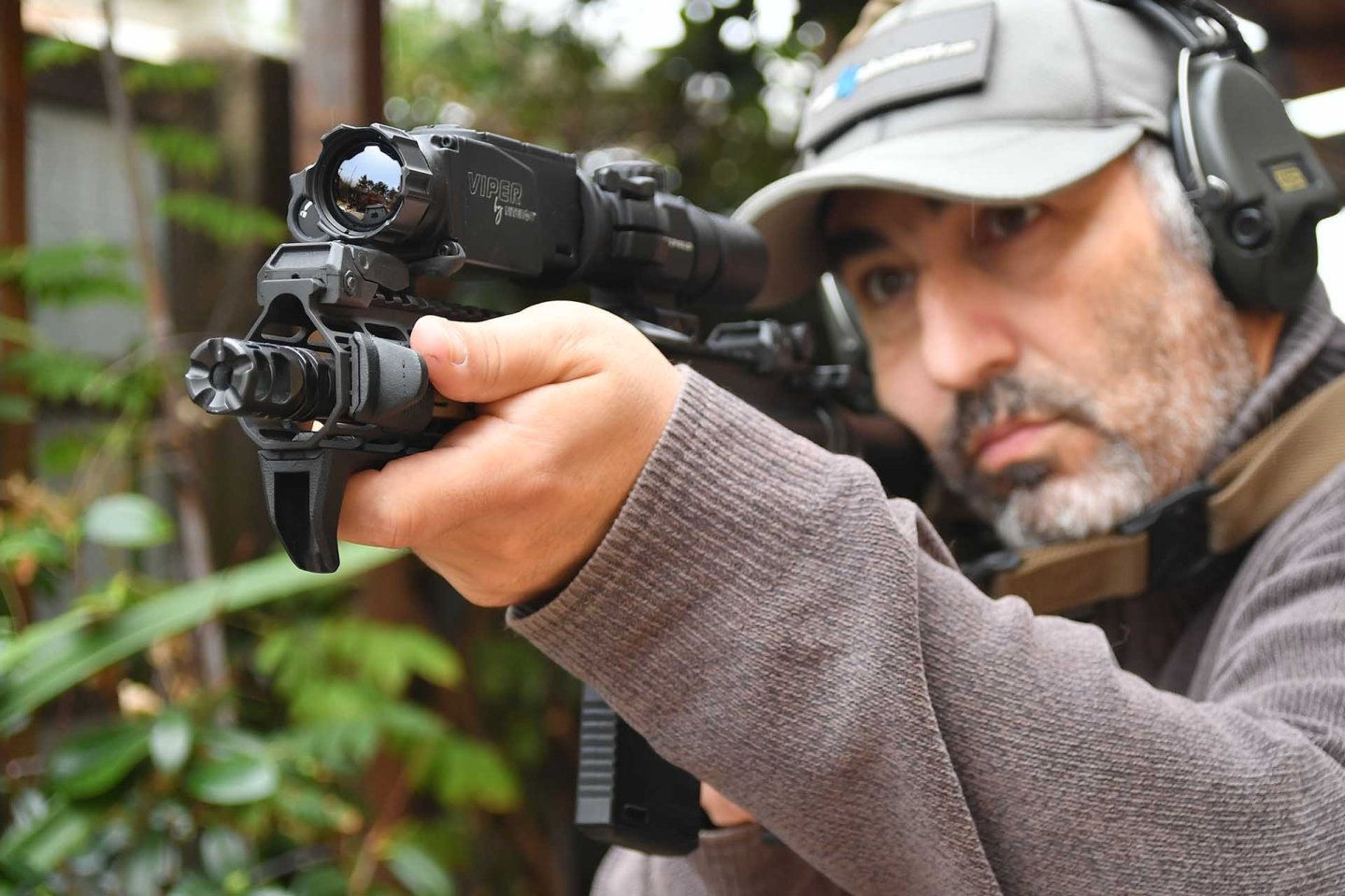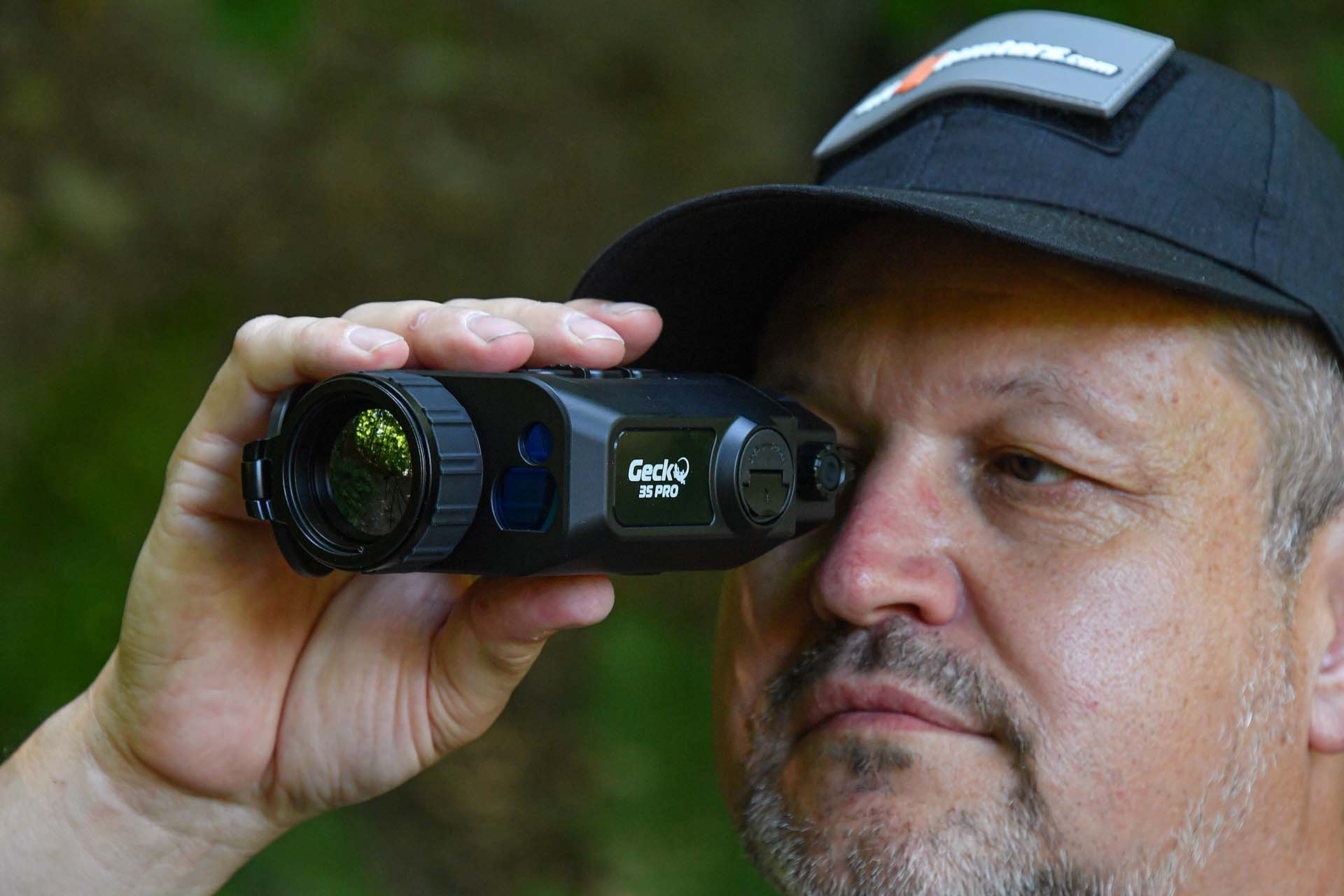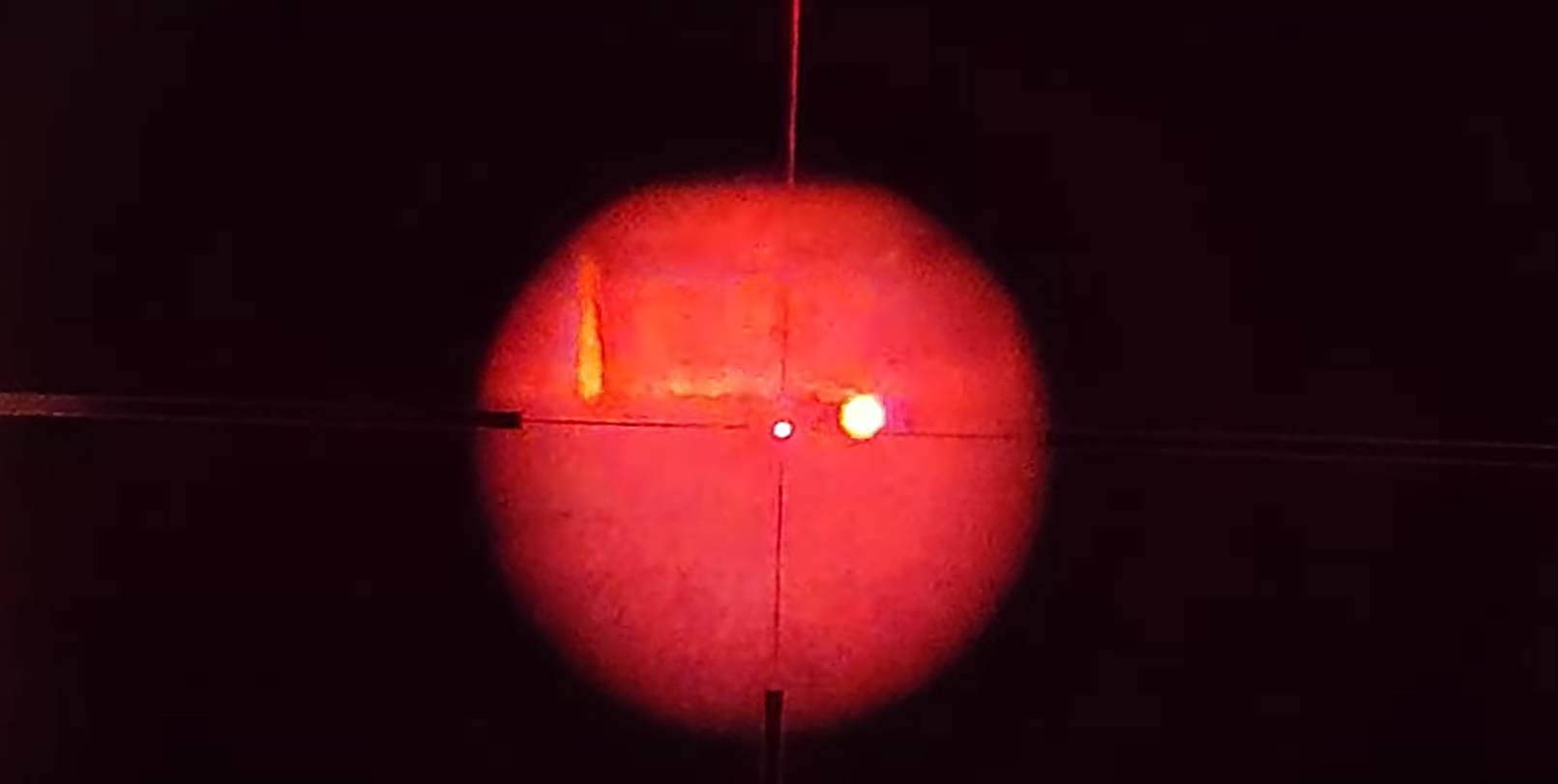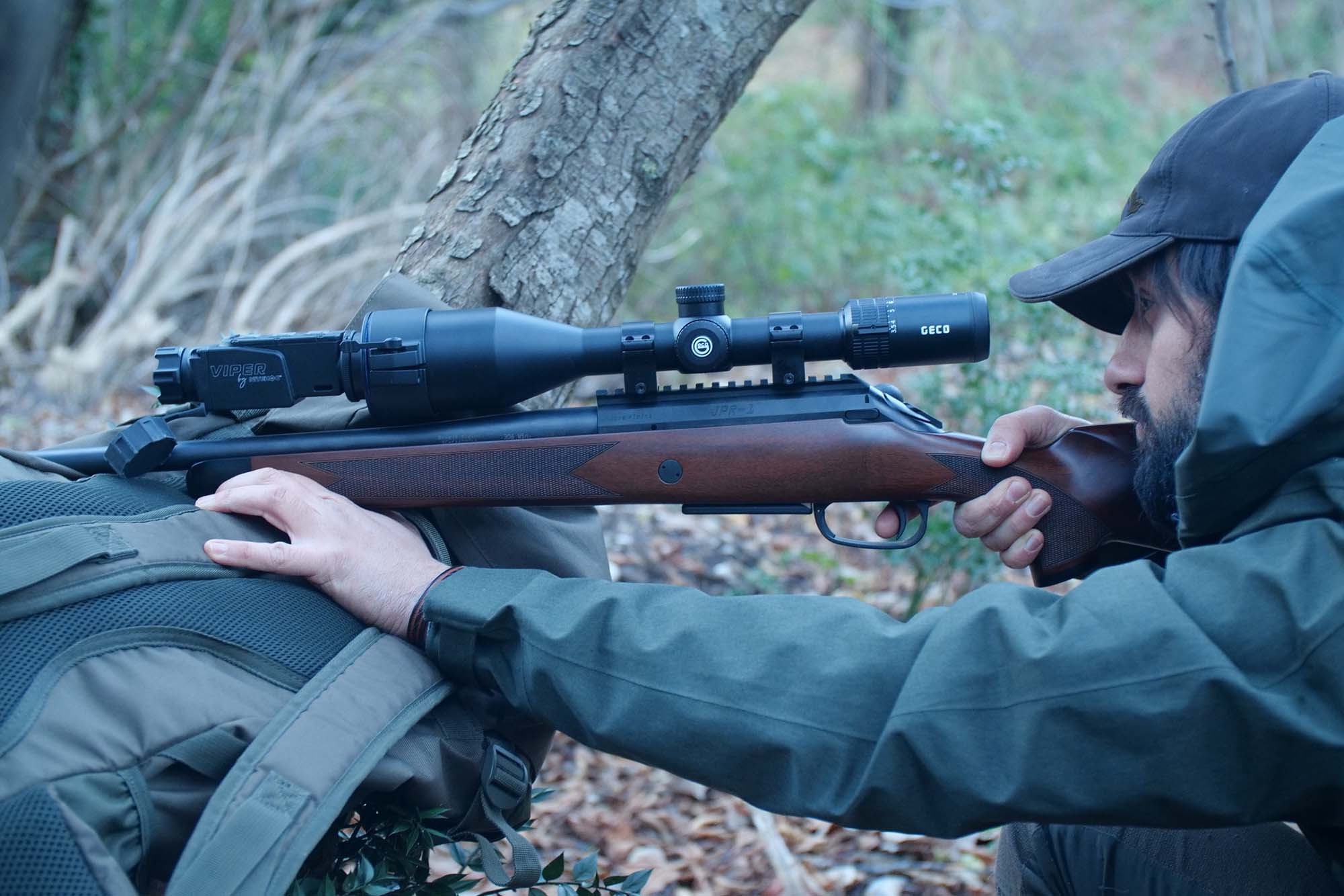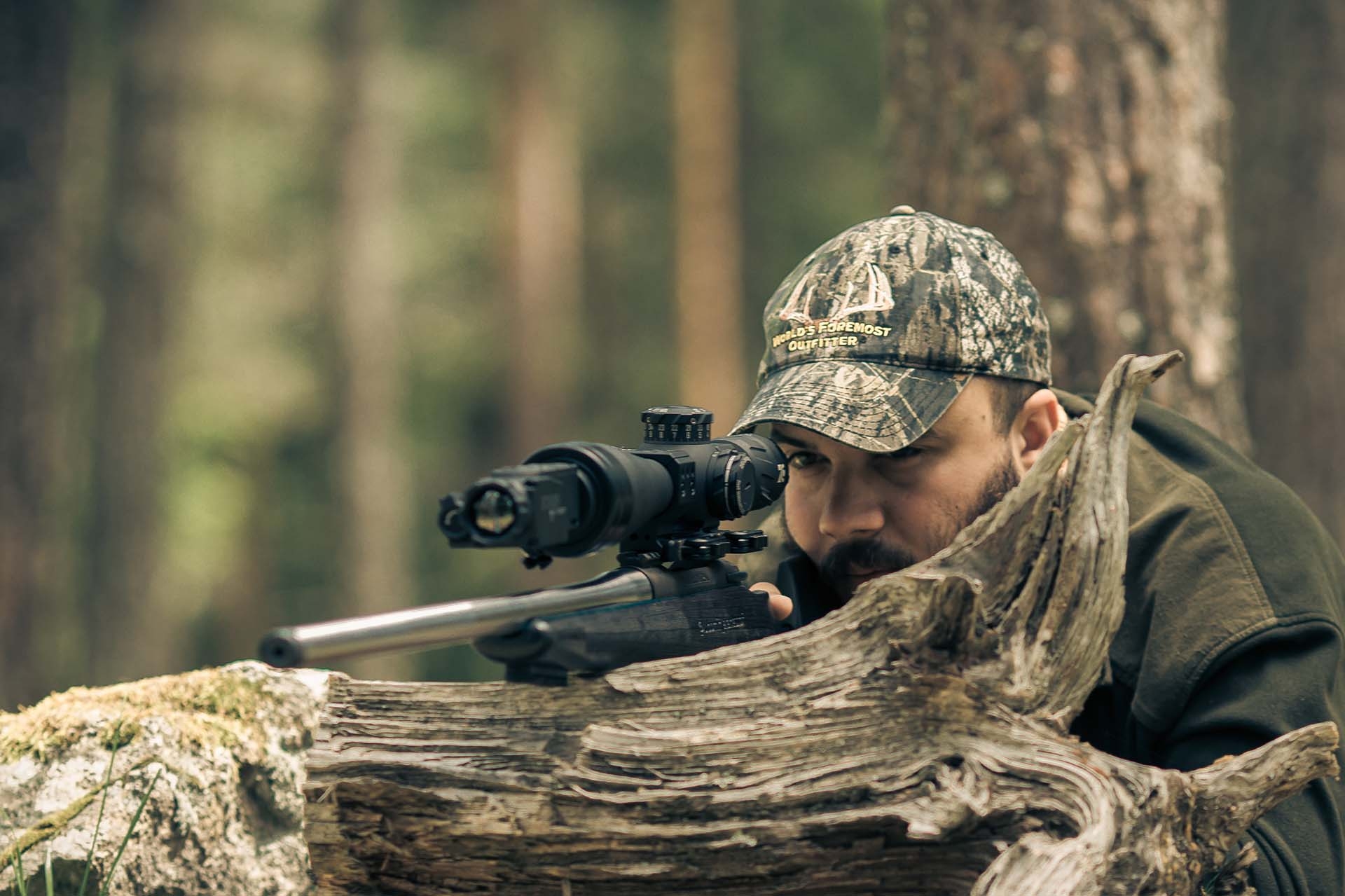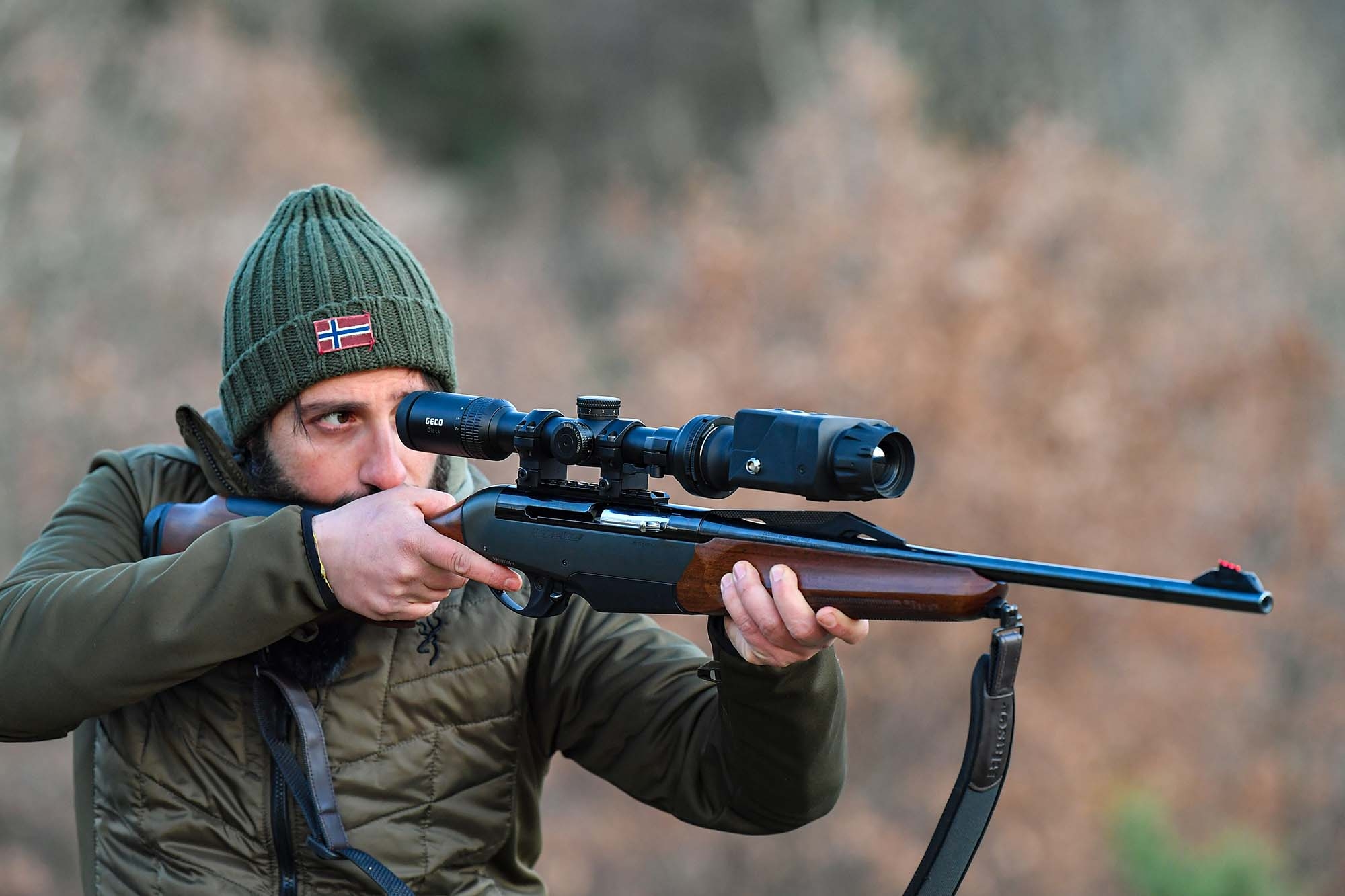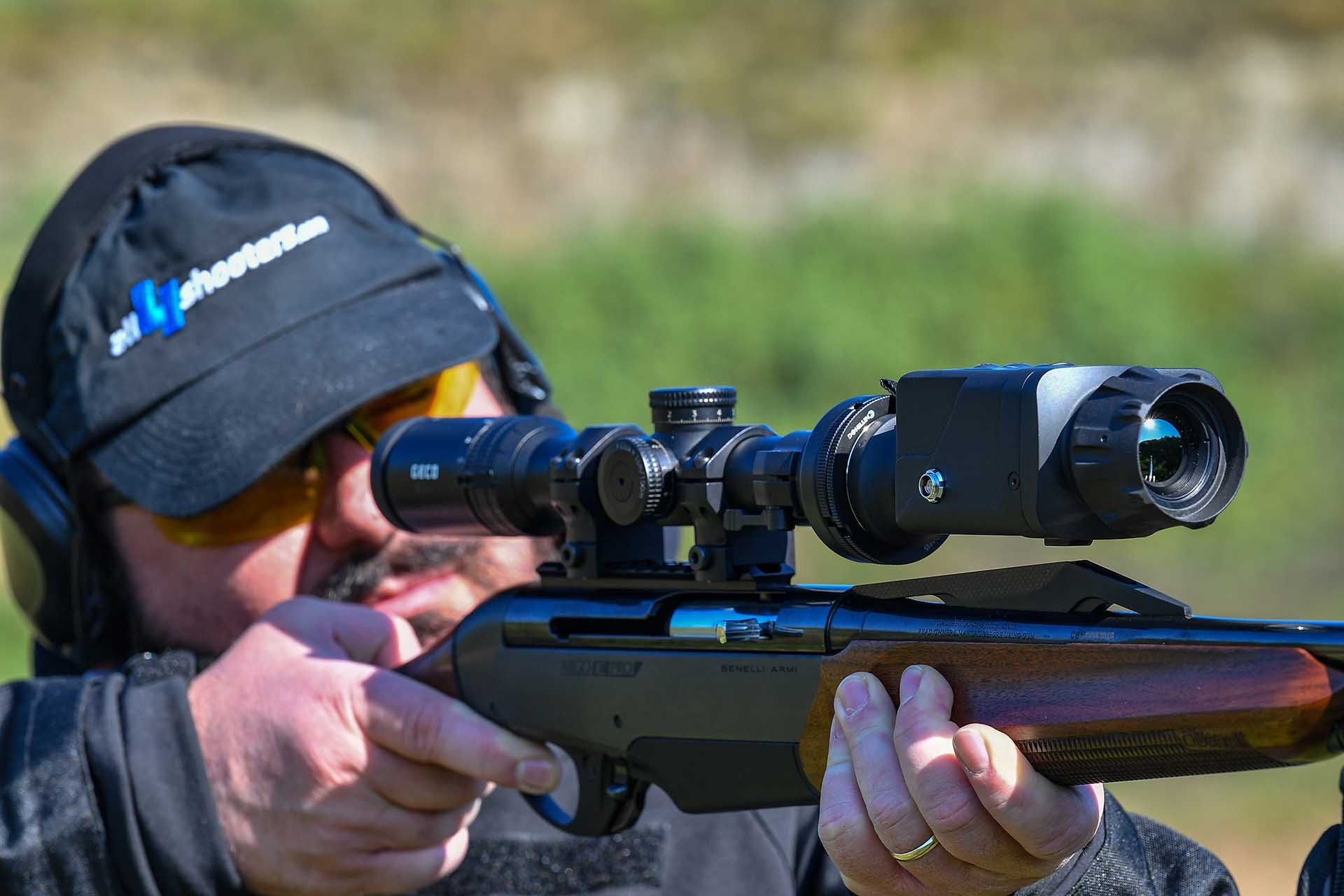While our friends from all4hunters.com are performing tests on a hunting rifle of the NITEHOG Viper out in the woods – where it rightly belongs – I had a wild idea.
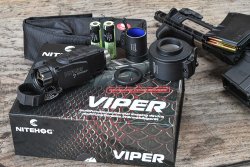
I had my time evaluating this little and super compact thermal imaging add-on and standalone clip-on electro-optic, on a more “pro” level, as is indeed also suggested by the website, which lists civil observation, first call services and outdoor activities other than hunting as possible uses of this flexible device.
While sensor resolution offered by the proprietary NiITEHOG A-Core imaging engine is more than decent, it is topped by a quick, progressive 60 hz refresh rate, which makes the Viper super-fast and eliminates display lag and image ghosting: in a word, it’s really, real time.
And this, more than image definition, is paramount in a professional use. Interlacing would double the refresh rate but would also introduce artifacts and ghosting in rendering fast moving objects – so beware of so-called high refresh rate specs that do not specify it as progressive.
NITEHOG TIR-M35 AC Viper – technical details and features
The Viper is small and light – about 300 g with the battery and less than 14 cm long; it measures just 133x63x46 mm overall.
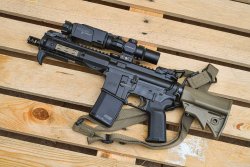
It is a no frills and very spartan device, offering a feature set that includes the essential and no more, no complex menu structure, nothing that can distract the user and make it hard to use when it counts. In this, the design team got it absolutely right. The intuitive pictogram menu system is easy to follow and operate even for users that just skimmed the manual.
The whole device is operated using a simple three button top mounted panel with multi-functional keys, including power. The NITEHOG Viper lacks some “features” that could indeed come handy, such as A/V recording and remote operability, but to tell the truth, I felt no need for these as I tested the electro-optic. The basics, and more are all there: it does have a couple color palettes, such as red-hot and isotherm, and the customary white or black hot. It can zoom up to 4x in observation mode.
Nifty and good quality proprietary image enhancements are selectable, such as Image Razor, which processes the raw image from the sensor to “ensure clear and sharp vision in a variety of environmental conditions such as fog, rain, snow, smoke, and total darkness”. It does just that, and it can be set to operate at a desired level in any operating mode.
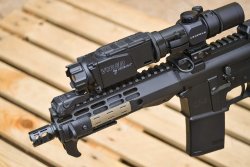
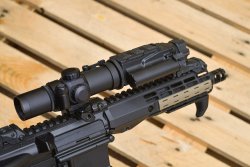
Worth noting that the two operating modes, one as a hand held device – that does not need any additional hardware to be used – and the other as an additional clip-on device for daytime optics, differ mainly by how the firmware renders the image on the 1024×768 resolution OLED microdisplay: in observation mode, the whole surface of the display is used, upscaling the output of the 320x240 pixels @ 12-micron pitch microbolometer sensor to cover the full usable resolution of the display, while the clip-on mode scales the image to the center only of the OLED so it’s more compatible with magnified daytime optics. Another difference is obviously that digital zoom (2x and 4x) is disabled, and all pictogram menu choices are presented in the center of the image, rather than on the side.
The ruggedness of an electro-optic matters a lot in a Pro scenario, and in this, the Viper is quite generous. It is built out of a machined Magnesium alloy bar stock and has an IP-66 impermeability certification. Batteries are not proprietary, but easily available 18650 Li-Ion rechargeable cells, and each can power the Viper for up to 5 hours; two are included with the device. Replacing the battery is extremely easy and can be done with the Viper mounted on the daytime optic.
Practical test: NITEHOG Viper dual use clip-on thermal imaging device
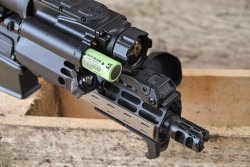
Obviously, to mount the NITEHOG Viper to a daytime riflescope or other optic an adaptor ring is needed. The manufacturer offers quite a selection of adapters, each compatible with a different objective lens, custom built by specialist Rusan. I ordered a 30 mm adapter to be able to use it with a standard GECO Black variable magnification riflescope, and also with a Leupold 1x24 Prismatic, which surprised me as it revealed itself as a killer optic with the Viper, due to its super compact size which complemented well with the Nitehog clip-on; alas, the Prismatic is no longer available.
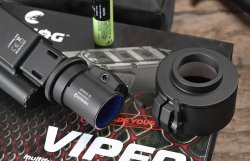
The Leupold/Viper combo was mounted on a pro-firearm (I am properly licensed in EU to own such a gun), a 300BLK caliber 7.5” semiauto SBR with collapsible stock based on the M4 action for LE and professional use. The whole gun is less than 56 cm long including the flash hider, making it a very compact package for vehicle and covert carry uses maintaining rifle class firepower.
The low-profile form factor means that there are no unwieldy and awkward projections out of the firearm package envelope, and the Germanium objective lens does not extend over the muzzle of the gun. Weight and balance are slightly advanced towards the muzzle, but overall it’s almost negligible, and if anything, it helps keep the muzzle down when shooting. Also, it is perfectly compatible with standard “shorty” carry bags for VIP Protection and LE squads.
Operation of the three buttons on the control panel is accessible with the supporting left hand never moving away from holding the firearm.
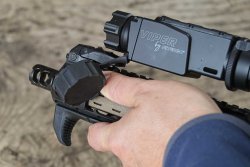
What is remarkable is the open eye aiming and shooting experience I could test with the Viper mounted: the Leupold is a true 1x unitary magnification optic, and the Viper also has a perfectly 1x image rendering in the eyepiece, so that I could “merge” for lack of a better term, the wide angle situational awareness view of my left eye with the thermal enhanced narrow FOV on the display offered by the Viper through the red illuminated reticle view with my aiming right eye.
Resulting speed in engagement, sweeps and target follow up rivals red-dot aiming – but we’re running a full optics package with heat imaging! In urban scenarios, in the hands of Police or Special agents, where there are sharp contrasts due to street illumination, car headlights and shop window lights, the thermal image of the Viper is a game changer to ID difficult and dangerous situations. And, if need be, it can be removed in seconds, leaving the gun with its primary daytime optic ready for action. Zero is preserved, and the standard deviation of less than 3 cm per 100-meter distance in out-of-the-box condition, without alignment, is adequate for engagements in typical LE MOUT scenarios that rarely exceed 30 meters. SWAT Team officers have been quite impressed with the described optics+gun package, handling and running it through a couple of light drills before confirming specifically that the Viper is “approved”.
Our impressions from the NITEHOG Viper test in a “professional environment”
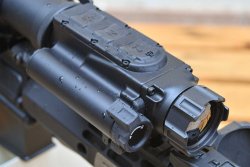
So, to wrap up my little test with the NITEHOG Viper in a hypothetical LE and Professional use scenario, I can attest that this compact electro-optic has a lot of potential and performs really well; the price is affordable and the flexibility of the Viper is able to make it shine even in an extreme and niche use such as in the hands of a Special LE officer.
But of course, our most interested readers will want to know how it performed in our live fire hunting test. all4hunters.com will satisfy all curiosities shortly, and with a video too! Keep following us!
MSRP of the NITEHOG Viper clip-on thermal imaging optic is 3,099 euro, including VAT; small differences in the price in EU countries are due to local VAT and taxes regulations.
As is the case for all thermal and night optics that can be used directly mounted on a firearm, all legal regulations of the weapon law and the respective national hunting law must be respected. The editor holds all proper licenses for the featured SBR firearm.
For additional information please visit NITEHOG website.


